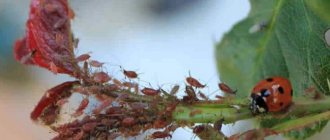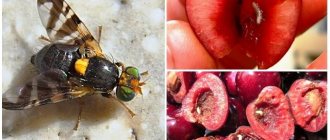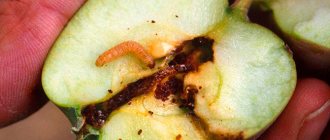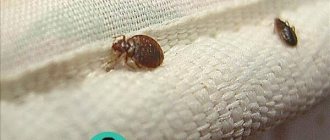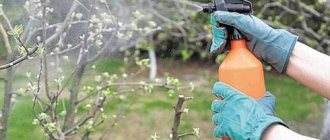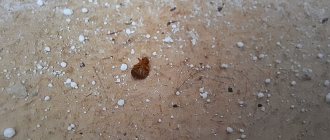If you need to get rid of a bark beetle in your garden, it’s worth finding out how to do it in the most effective and safe way. The beetle damages not only trees - if its spread is not prevented, it can destroy a wooden house in a few years. It is difficult to fight the pest, but if you are persistent, the trees will be healthy and will delight you with a rich harvest. In order not to doom yourself to a long war with the pest, take preventative measures and make your area completely unattractive to insects.
Ways to fight
When fighting bark beetles, a set of measures is used aimed at generally improving the condition of trees, increasing their natural resistance and barrier protection.
Among the measures that improve the immunity of trees, one can note the application of fertilizers, growth and root formation modulators, improvement of growing conditions (regular watering of trees, improvement of soil penetration - deep and surface loosening). If the weakening occurred as a result of construction, then measures are necessary to improve the soil - removal of construction waste, cutting and disposal of soil poisoned by construction chemicals, eliminating the consequences of soil leaching. Barrier methods remain the main means of combating the typorgaf bark beetle. This includes spraying the trunks of spruce trees with insecticides and biological preparations and intra-trunk injections of medicinal preparations. Separately, it should be noted that this method of combating bark beetles is the installation of pheromone traps
It is advisable to use pheromone traps only over large areas (important!), since the pheromone attracts bark beetles at a distance of up to 7 km. Beetles fly from all surrounding plantings and infect not only the tree on which the pheromone trap is installed, but also nearby trees
All affected trees are then removed and disposed of immediately. On private lands of less than 10 hectares, this beetle control measure is potentially harmful to all trees on the site. As an alternative, a method of repelling bark beetles with antipheromones is used. The principle of action of antipheromones is based on repelling insects from each specific tree, and not on attracting them.
In each specific case, a protection scheme is selected that will be most effective for trees of a given species, age, and condition. It is possible to select drugs that are completely safe for the environment and humans, but still provide reliable protection. There are a number of restrictions on the use of biological agents in pest control. Biological protection will not work if there are no pests on the site. Insects are a “home” for living microorganisms designed to protect the tree stand. Bacteria and/or nematodes multiply in the beetles (depending on the drug used for protection), then the insects carry the microorganisms throughout the area, infecting other beetles. Sick beetles are not able to produce a healthy generation. The outbreak stops. If all the trees on the site are healthy and there are no signs of bark beetle infestation, then this method will not work. In this case, you should look for alternative methods of protection (injections, treatments with insecticidal or repellent preparations, installation of repellers). Based on this, control schemes will vary in cost and number of treatments/unit measures.
Mechanical methods of pest control
A radical way to get rid of bark beetles is to dismantle and burn the affected wood. This method is used in exceptional cases, as it has a number of disadvantages:
- damage to the integrity of wooden structures is required;
- it is impossible to be absolutely sure that the remaining elements of the structure are not affected by pests;
- effective only at the initial stage of bark beetle reproduction.
XILIX Gel
XILIX Gel gets rid of all wood pests. This professional biocide effectively removes mold, mildew, insects, and larvae. It also treats affected areas of houses and forms effective protection.
How XILIX Gel works
The drug protects and rids wood of parasites. The white gel-like substance acts as an insecticide. Contains permethrin (0.51%), which resists sucking and leaf-eating pests. Eliminates organisms resistant to organophosphorus insecticides. The drug is dangerous for cats .
A gel with significant penetration properties penetrates deeply to a distance of 10 cm from the surface and does not drain. Kills adult insects and larvae. Propiconazole in the composition prevents the appearance of mold and fungi. Fungal spores do not settle on the surface of the wood product. Due to the thixotropic formulation, the drug acts without loss of properties in a thick wood layer. The number of passes to obtain a therapeutic effect is reduced.
Benefits of the gel
XILIX Gel is an innovation in methodological approaches to getting rid of tree pests. Advantages:
- resistance to mold, mildew, wood pests, including larvae, eggs;
- deep penetrating ability due to a special formula;
- Possibility of use outside and inside housing;
- long-term preservation of the effect (there will be no secondary infection for 10 years);
- safety for humans, the environment and pets (excluding cats);
- suitable for all wood species;
- does not change the color of the wood, does not leave stains;
- no smell;
- acceptable cost.
The best place to order XILIX GEL treatment is from. The specialists passed prof. training and have all the necessary equipment to provide the highest quality services.
Preparation for the procedure and application of XILIX Gel
Before processing, you need to consider: the use of XILIX Gel requires professional assistance, since special equipment is used. Xilix Gel is applied by spraying with a painting unit with a hydrodynamic pump:
- GRACO;
- WAGNER;
- TITAN.
First comes the preparation of the wood. It is cleaned of dirt and dust. Old paintwork or other coatings are removed. The wood is sanded to remove loose layers using professional equipment. Damaged wood elements must be replaced before applying Xilix Gel.
The gel contains a fluorescent pigment, so you can monitor the quality of the coating. The pigment appears about a month after application of the drug. XILIX Gel is used at temperatures above 0 °C, wood moisture content is not more than 25%.
The product is applied by applying one to three layers to the wood, depending on the thickness, type, and humidity of the substrate under low pressure (maximum 5 bar). In areas where application of the gel is difficult, parenteral injection of the drug into the drilled holes is carried out to ensure complete impregnation. Spraying is important for wood with a significant diameter or wood that is difficult to access from several sides.
Working diagram:
- Inspect the facility, carry out calculations of chemical consumption.
- Prepare part of the base for application.
- Apply the drug.
- Check the results.
Xilix Gel for bugs and fungus
The drug is used for prophylactic or therapeutic purposes. For prevention:
- insect eggs die because they are in the upper woody layer and are the first to be affected by the drug;
- females are unable to lay eggs;
- the larvae present cannot resist the action of the drug and die;
- fungal spores do not settle, do not multiply, and do not survive.
During treatment:
- the drug prevents the formation of mold and fungi;
- The product kills various insects, adults and larvae. The drug is quickly absorbed, penetrates 10 cm from the surface or more, and effectively fights even pests hidden deep inside.
XILIX Gel is an active substance manufactured by a manufacturer from France. Sold in the form of a gel, its purpose is to treat wood to get rid of insects, mold, and mildew. There are no similar preparations in the Russian Federation with a similar formula, thanks to which the gel penetrates into the deep layers of wood. A 10-year guarantee on the effectiveness of the treatment is provided. This is an effective drug for treating wood and preventing destruction due to pests.
XILIX Gel
Fumigation
Fumigation using phosphine or magtoxin gases will help control pests. The poisonous gas penetrates the passages of insects, destroying eggs, larvae, pupae and adults. Carrying out aeration should be entrusted to specialists in order to achieve maximum results in the fight against parasites and avoid poisoning and other negative consequences.
During fumigation, the outside of a wooden house is covered with a special dome, which prevents the spread of gas throughout the area and increases the efficiency of treating the structure.
Disadvantages of fumigation:
- high price;
- the need to attract specialists;
- high toxicity of the gas used;
- After etching, degassing is required to disintegrate the phosphine particles.
Pheromone trap
Mechanical methods of influence include a pheromone trap. This biological method is environmentally friendly, safe for people and animals. The trap is a plastic structure containing a pheromone inside. The beetles flock to the attractive aroma, hit the partition and fall to the bottom of the container, from where they cannot escape. The principle of operation of the pheromone trap is described in detail in the video:
It is important to understand that a pheromone trap is effective for catching only adult individuals, and it can also work the other way around - attracting insects from other territories that will not fall into the trap, but will settle in trees, destroying them.
Microwave devices
Devices emitting high-frequency electromagnetic waves will help fight pests in a wooden house. The microwave emitter heats the wood to high temperatures (+60 ℃), which effectively destroys insects at different stages of development. This method is safe for the building and residents, but requires compliance with certain safety measures, so it is better to entrust the work to specialists.
Methods of controlling bark beetle
Columnar tree varieties, care features and reviews.
Columnar fruit trees. Columnar fruit trees !!!The bark beetle is an insect that gradually destroys trees in our garden, regardless of their age. The bark beetle has a well-developed sense of smell, which allows them to select the desired fruit plant. He doesn’t shy away from the house either (the floor, furniture, windows and doors are his favorite treats). The people call the bark beetle shashel.
The bark beetle damages the wood, which supplies moisture and nutrients so necessary for the normal growth and development of the tree.
Bark beetles live and feed both inside and outside the tree, but overwinter only inside it and, unfortunately, multiply very quickly. They are attracted to felled, old and weakened trees.
The presence of a bark beetle is determined visually - this is the presence of round and oval holes. The color of the sawdust that the bark beetle throws out when making tunnels determines the location of the beetles (brown small sawdust or flour - beetles under the bark, white - deep in the tree).
Is it possible to fight the bark beetle or is it better to prevent it?
Prevention and more prevention!!!
What is it?
First of all, this is a constant inspection of trees, correct agricultural technology, pruning, mulching, timely watering, fertilizing, spraying and much more. Spring and autumn care of garden trees is especially important (pruning, cleaning the bark, whitewashing the trees, digging up the soil around the tree, spraying with protective equipment and, if necessary, treating them).
The fight against the bark beetle must begin at its first appearance, when the beetle is only under the bark. In this case, it is possible to save the tree. But if the beetles are deep in the tree, then things are bad, it is almost impossible to save the tree.
Methods of controlling bark beetle
Methods of controlling bark beetle:
1 Having discovered a tree damaged by the bark beetle, it is necessary to determine the depth of its penetration into the tree. To do this, shallow cuts of the bark are made with a scraper and the degree of infection of the tree is determined.
After this, treatment with protective chemicals is carried out.
2An effective method of controlling the bark beetle is prevention.
To prevent the appearance of bark beetles, biological products are used.
They effectively protect trees from pests, while being safe for humans, the treated wood and beneficial insects.
It is better to carry out treatment after flowering and before autumn (until the end of August), when the bark beetle feeds on green leaves. This treatment allows you to destroy beetles as they grow older, slowly, but it gives a positive effect.
3There is another effective method of combating the bark beetle - intra-trunk injections. To do this, a special syringe is used, with which an injection is injected into the tree trunk, which increases the natural resistance of the tree to the bark beetle.
3When fighting bark beetles, mechanical control methods are also used - the infected branch is cut off and immediately burned.
A sign of the presence of a bark beetle in the garden is a woodpecker. The woodpecker is the doctor of the garden; it is he who destroys the bark beetle.
- Thuja or Cypress?
- Patio
- When does Magnolia bloom?
- How to choose a lawn mower
- Strawberry mite
- Early ripening, parthenocarpic varieties of CUCUMBERS - 2
- Luffa - pumpkin or loofah
- Pots, molds, trays for seedlings
- Cultivators
- Trimers
- What to do if bitten...Dacha secrets
- Fighting a mole cricket
- Microorganisms make soil fertile
- Design of staircases on rails
- Phoenix cucumber is a late-ripening, bee-pollinated variety.
- Strawberry (garden strawberry) Kama
- Exotic fruits Lychee, Longan, Longkong
- Spider mites on cucumbers: control methods
- Design of country house plots
- Types of fireplaces for the home
- Country humor
- LED strip for plants
- Fire bowl
- Protection against leaks of concrete structures
- Work in January in the garden and vegetable garden
- Ecoveranda
- Gardening. Tips for Newbies
- Lawn fertilizers
Senezh-Insa - a bark beetle remedy with a stable effect
An example of an excellent antiseptic is SenezhInsa, also made in Russia. The drug has been actively used since 2012 and is in demand both among professional agronomists and amateur summer residents. The product is completely colorless, packaged in small canisters of 5 liters or large barrels of 60 kg.
The concentrate is based on water, so when interacting with wood, its texture and color do not change.
The drug penetrates the tree bark, leaving the active components there. Non-toxic and effective. Helps get rid of different types of beetles and bacteria, regardless of the stages of their development.
Summarizing all of the above, we note that it is not enough to know how to cure a tree from bark beetle when insect damage has reached such a level that it is almost impossible to save the plant. In order for the garden to grow healthy and fruitful, you need to monitor the trees, preventing the appearance of pests and treating the trunks at the initial stages of infection.
How to deal with the bark beetle in the garden
Weeping larch and other weeping trees for the garden
Good afternoon, dear friends!
Probably every summer resident has encountered a problem when the bark beetle destroys fruit trees. It damages the tissue through which water and essential nutrients pass, making more and more moves in the trunk, disrupting the nutritional system. This leads to the slow but sure death of trees. Let's talk about how to fight the bark beetle in the garden.
Varieties of bark beetles. How dangerous are they?
There are about 800 species of bark beetles in the world. The most dangerous are considered to be:
1. Typograph bark beetle, which destroys coniferous forests.
2. Wrinkled sapwood harms fruit trees.
3. The apple bark beetle lives mainly in pears, apple trees and rowan trees.
4. The western gypsy bark beetle attacks absolutely all healthy trees, mainly deciduous trees.
Female bark beetles gnaw sun-shaped tunnels under the bark and lay eggs at the end of each – up to a hundred eggs in one nest! The larvae grow and begin to feed on the wood, as a result of which the trees weaken and gradually wither and die. After 4 weeks, these insects fly out in search of a new tree to reproduce.
Signs that there is a bark beetle in a tree
You need to know that bark beetles have an excellent sense of smell and do not want to waste their energy on healthy and strong trees, but prefer to settle in weakened and sick trees, so we first inspect these. You need to take a closer look at the trunk. If round holes are visible on it, then most likely a bark beetle lives there. As a rule, there are sawdust around such holes
Notice what color they are! If they are brown, then the bark beetle is under the bark and has not yet caused much damage to the tree; it can still be saved. If the sawdust is white, then the beetle is in the trunk, and it is already useless to treat the affected tree in any way.
It needs to be cut down, and the stump should preferably be uprooted to avoid further spread of bark beetles.
Also, if you notice a woodpecker knocking on a tree in the garden, this is a signal that insects live there, and you need to urgently take measures to treat this tree!
How to treat a tree for bark beetle
The difficulty of fighting bark beetles is that these beetles are almost always found inside the tree in the wood, and only in the summer do adult individuals come out. Therefore, do not wait until the bark beetle settles in the tree, but periodically treat fruit trees for preventive purposes:
• paint annually with lime mortar;
• spray with chemical or biological products in the spring every six months immediately after the trees bloom. For example, such as Boverin, Lepidotsid;
• you can coat the trunk with slaked lime and manure or a mixture of humus and clay;
• burn fallen leaves in the fall.
In order to strengthen the tree and reduce the risk of disease, you need to constantly care for it: water it, apply organic and mineral fertilizers, trim dry branches, form a crown, fluff up the soil and “cover” the tree for winter.
But if it turns out that the tree was not protected from the invasion of bark beetles, then it is necessary to use the following methods of combating them:
• treat damaged areas with kerosene or tar;
• clean the holes (passages) with a wire and inject the insecticide solution with a syringe 3-5 times. You can use "Empire-20", "Anti-bug". It is better to do this after the trees have finished flowering until the end of August, when the beetles come out;
• if the tree cannot be saved, then it must be burned.
You can make interesting traps for bark beetles. At the beginning of summer, place freshly cut tree trunks around the perimeter of the site. Bark beetles are likely to choose decomposed wood to lay their eggs. At the end of summer you need to collect pieces of wood and burn them.
Now you know how to deal with the bark beetle
in the garden using aggressive methods, but it is best to try to create optimal and comfortable conditions for birds and beneficial insects, so as not to resort to chemical exposure to trees. See you!
Treating a wooden house against bark beetle
The worst thing is if the bark beetle has settled in the house. First, inspect all wooden elements - walls, furniture and more. Prepare everything you need:
- choose a pest control product
- When using chemicals, wear protective equipment
- remove other residents and animals from the house, remove plants.
Now you can start processing:
- first clean the wood from dust and dirt (you can use a vacuum cleaner or brush for this)
- saturate the wood with protective agents
- pour antiseptic with a syringe directly into the beetles' passages
- close the holes with sealants (silicone can be used)
- After treatment, you should apply varnish or paint.
We help develop immunity in the culture
Fruit trees and shrubs for the garden, columnar fruit trees
The best and most effective way to protect trees is to develop immunity in them
It is important to understand that a healthy crop will have strong wood, due to which the bark beetle will avoid such a crop. After all, he is looking for a tree with soft wood, in which it is easier for him to survive and lay his own offspring
And to boost and strengthen your immune system, use tools such as:
- use the preparation nb 10, the granules of which are scattered around the tree and then watered with water;
- gum 30;
- phosphorus and potassium agents.
All these substances can strengthen the immune system of the apple crop and make it unstable to external negative factors.
Damage caused, including larvae
The bark beetle is an insect not exceeding 5-6 cm in length. The body of an adult is brown, hairy, and cylindrical in shape. What harm does it cause to trees?
- After penetrating the tree trunk, the insect settles there, feeding on living tissue;
- The bark beetle also reproduces inside the trunk;
- In spring, the female lays eggs. After emergence, the larvae live for a year in the passages made by the female, feeding on the sap of the tree, and in the spring they become adults;
- Insects cause the death of a tree as a result of gnawing it from the inside. They move inside the trunk, making hundreds of moves. These passages prevent the sap from moving normally, which leads to weakening and premature drying of the tree.
Insects not only eat the bark, but also carry fungal and infectious diseases.
Characteristics and description of the apple bark beetle
Female bark beetles usually choose weak or young apple trees to lay their eggs. Thanks to strong bark, mature healthy trees are less susceptible to bark beetle attacks. There are holes visible on the trunk or branches through which the beetle enters the wood. If you remove the bark, you can see tunnels built directly into the sap circulation layer (sapwood). Female bark beetles create a main longitudinal gallery about 5-6 cm long (up to 10 cm) and 2 mm wide.
Important! The infestation of a fruit apple tree by bark beetle is a sign of plant weakness, possibly caused by fungal diseases or unfavorable soil conditions, such as soaking of the roots when groundwater is close.
They then lay eggs in small cavities on the sides of this tunnel. After hatching, the larvae begin to dig their own tunnels, slightly shorter in length, located away from the original tunnel and almost perpendicular to it. The bark beetle, Latin name Scolytus mali, inhabits fruit crops. The larvae of this insect feed on the sap of tender wood located immediately under the bark.
Adults have a light reddish-brown body, about 2.5–4.5 mm long, and a black head. The larvae overwinter under the bark of a tree. After the onset of stable warm weather in the spring, at a constant air temperature of +8...+20°C, adult beetles hatch from bark beetle larvae, gnaw their way out through the bark and fly to other suitable trees to begin a new reproduction cycle.
Signs of tree beetle damage
When trees are infested with bark beetles, one of the first signs will be severe gumming on coniferous trees. This is a good sign and indicates that the tree is fighting off beetle attacks. On the bark of spruce trees, absolutely transparent resin flows out of the holes left by insects, but on pine trees the resin is viscous, white-yellow in color (pictured below). Unfortunately, during massive attacks, the tree still dies, despite active threshing.
When attacks have taken place and a tree has been colonized by beetles, another sign appears - drill flour on the trunks and under the trunks of trees. It’s as if dust is pouring out of the bark, first brownish-brown in color, and then white (pictured below). Boring flour (from the word “drill”) is small sawdust that the bark beetle leaves when it penetrates into a tree. The brown color indicates the activity of a bark beetle, for example, a typographer (these sawdust arises from damage to the bark), and white sawdust appears when the trunk is colonized by other pests, such as wood borers and longhorned beetles. As a rule, longhorned beetles come after the wood has been destroyed by bark beetles.
Another significant sign of an attack by bark beetles is the loss of needles in conifers and the weakening of the crown of deciduous trees due to the massive loss of foliage and young shoots (pictured in the top middle). The falling off of the bark occurs at the final stage of colonization by stem pests, when the beetles have damaged the entire layer of bark.
The photo below shows a spruce affected by the typorgaph bark beetle. Climbers cut the dried tree in parts, carefully lowering the parts. The cut is complicated by the fact that the trunk is located directly above the roof of the house. The owners of the site designed the house based on the situation with the trees. The beetles attacked the trees quickly, the owners turned for help when nothing could be done except cut them down. The tree in the foreground is also infested and was the next to be cut down.
Prevention of occurrence
Preventive measures to prevent the appearance of bark beetles in a garden or forest area include:
- choosing the right site. The soil must be nutritious and sufficiently moist;
- trees must be systematically cleaned and shaped;
- burn old branches and pieces of bark;
- uproot and burn stumps remaining after felling;
- treat the tree trunk with a mixture of manure and slaked lime;
- the appearance of rot on trunks or objects made of wood is the first sign of a bark beetle attack. Don’t be lazy to inspect them periodically;
- larvae may appear on the site along with imported wood from which houses or other outbuildings are made. If the ends of the logs are riddled with holes or rotten, it is worth treating them with chemicals for prevention.
What you can do yourself
There is no need to confuse the “injection method” of flight holes left by beetles on fruit trees and injections to prevent the colonization of forest trees by bark beetles. In the first case, gardeners are recommended to fight bark beetles on apple or pear trees by injecting insecticidal preparations themselves into the holes in the tree bark gnawed by the beetles. This method may well be used independently, provided that the attacks were isolated, and we are talking about fruit trees or small plants. If it is necessary to protect a mature spruce, and even in conditions of a massive outbreak, then only preventive measures are used. Arborget injections are given to prevent colonization. Unfortunately, it is practically useless to save a tree that is actively infested with beetles. If you are forced to give injections to an infected tree, please do not grasp at straws! Before it’s too late, healthy trees need to be protected, but sick trees need to be cut down and immediately disposed of (take out, burn, or, at worst, spray)! Of course, this requires a conclusion from a forest pathologist. In rare cases, colonization does not occur along the entire circumference of the trunk, and something else can be done. But, we repeat, for forest trees this is the exception rather than the rule.
You can fertilize your plants yourself and provide them with sufficient watering. Watering is especially important during dry periods. Outbreaks of mass reproduction of insects occur after prolonged droughts. the reason is the weakening of the trees. There are known cases when, during the drought of 2010, owners of cottages in forest areas actively watered their trees. And in subsequent years, they were not afraid of the bark beetle raging behind the fence. Strong trees do not need additional protection! Remember this! Unfortunately, the forest pathologist is called to the site when problems already arise. And this simple advice in time could save a huge amount of money and effort for the subsequent fight against diseases and pests. If you have any doubts about the condition of your plantings, contact a specialist. After all, the main problem is that a person who is far from protecting the forest will never visually determine whether a forest tree is sick or not. In past years it stood “green with needles”, and now. But harmful processes may already be going on inside. It is much easier to stop them in advance, without waiting for epidemics
It is important to understand that any construction near forest trees, any change in growing conditions (laying drainage, installing lawns, planting orchards nearby, partial cutting down of neighboring plants or undergrowth, undergrowth - all this has a detrimental effect on the health of the plantings
So, if you are protecting fruit trees, then to combat bark beetles you can use spraying, self-treatment with insecticides, and fertilizing with organo-mineral fertilizers. All this can be called in one word - caring and timely care. A well-kept garden will always be more resistant to pests and diseases than a neglected one.
If we are talking about forest plants, it is better to contact a specialist. The consequences of self-treatment are sometimes worse than not taking any measures at all. The only advice that can be given regarding forest plantations is timely and abundant watering during periods of drought. The photo below shows a pine trunk affected by blue staining as a result of self-injection of an insecticidal solution under the bark without observing aseptic measures.
The most common mistakes gardeners make
Above, we looked at how to overcome the bark beetle and what medications will help you. However, our article will not be complete without listing the most common mistakes made by summer residents, as a result of which the bark beetle attacks.
As a rule, if you have this individual in your front garden, then you probably made the following mistakes in care:
- improperly organized care;
- ignoring the manifestation of cracks in the bark and the resulting frost holes;
- in the spring after pruning the plants, the trimmed areas are not properly processed;
- lack of timely pruning;
- ignoring autumn garden cleaning.
If you do not take care of your crops and do not follow the simplest rules of care, then there is a high probability that pests will comfortably settle in your garden. The fact is that bark beetles can destroy an orchard over the summer. For this reason, try to perform the following preventive measures:
- form the crop crown correctly;
- carry out autumn treatment and remove weeds from the front garden;
- regularly carry out preventive treatments with insecticides;
- if a bark beetle has infected a tree, get rid of it immediately and burn the stumps;
- feed and water the apple trees;
- do not forget to whiten the trunks.
And lastly, if this individual has managed to colonize your garden en masse, the best option would be to seek help from the appropriate company, which will help destroy this parasite. Remember, bark beetles are capable of destroying trees in just a matter of days.
111
Prevention against bark beetle
It is easier to prevent any disease than to treat it. And if we are talking about an invasion of bark beetles, it is especially important to follow this rule. Removing pests can sometimes be very difficult. Therefore, it is better to follow preventive measures:
- during long-term storage, logs and boards should be treated from moisture
- if you buy wood, check for holes and other signs of beetles
- for construction, use only dry boards, as humidity creates favorable conditions for attracting pests
- do not allow moisture to accumulate on logs and boards
- carry out preventive treatment with special impregnations
- varnish finished wooden products.
So, we found out how to treat wooden logs and boards against bark beetles, as well as how to protect your home from a colony of these insects. It is up to you to decide which processing method to choose. The main thing is not to forget to carry out timely prevention in order to get rid of the problem forever.
What to do and how to get rid of the bark beetle in the garden
It is necessary to begin the fight against the bark beetle immediately, using various methods.
How to deal with bark beetle: chemical methods
Description:
- Chemicals, or insecticides, can penetrate even into deep layers. Often they fight beetles with the help of chemicals;
- Treat with insecticides only after the end of the flowering period. Since it is during this period that the main years of bark beetles begin;
- The following drugs are most effective: “Confidor”, “Calypso”, “Arrivo”, “Pirinex”;
- When using chemicals, you should know that the drugs are quite toxic not only to beetles and their individuals, but also to humans.
Before processing, it is recommended to wear a protective suit, goggles, gloves and a respirator.
What to display: folk protection
Of all the variety of folk remedies, only one recipe stands out, allowing you to effectively and efficiently get rid of and destroy uninvited guests. To prepare this solution you will need the following components:
- 6 liters of warm, settled water;
- 2.5 cups of laundry soap, pre-grated on a fine grater;
- 2.5 cups of carbolic acid.
All ingredients are thoroughly dissolved in warm water. The resulting concentrate is then diluted in 15 liters of water. The resulting solution is used for abundant spraying of plantings.
A week later, re-treatment is carried out, since pests that did not die after the first treatment may remain on the tree.
Prevention
Despite the fact that bark beetles are capable of covering considerable distances, their rapid spread is typical mainly for one small area. To prevent the appearance of beetles in your garden plot, you should follow preventive measures:
- Keep the garden area clean, remove plant residues and pruned branches in a timely manner;
- Get rid of stumps, dead wood, fallen leaves, cut or broken branches on the site;
- Regularly weed out weeds and cultivate the soil under the crown of fruit bushes;
- They strengthen the immune system and feed the trees in a timely manner to effectively protect the trees from the bark beetle. Treat any cuts, breaks, wounds using garden varnish. Regularly inspect trunks and branches.
Bark beetle on an apple tree:
The use of the listed methods of combating the bark beetle, while simultaneously observing preventive measures to improve the health of fruit trees, contributes to the effective destruction of the pest not only on the apple tree, but also on other garden shrubs.
Prevention of the appearance of bark beetles in a wooden house
In order to preserve a wooden building and avoid the appearance of a grinder, pay special attention to the selection and preparation of wood:
- check the boards before purchasing, inspect them for small holes or passages;
- choose dry wood, since wet wood contains sap that attracts bark beetles;
- when purchasing logs, examine the ends and make sure there are no tunnels;
- treat the material with insecticides and cover with a protective composition;
- Avoid high humidity in the room, prevent wood from rotting and fungus from spreading.
To build a house, choose high-quality dry wood without fungus and signs of the presence of bark beetles.
When buying a wooden house, pay attention to the condition of the wood and the presence of infection, and when moving into a new building, first carry out antiseptic treatment. For prevention, use the chemicals “Ecolan”, “Antizhuk”, “Wood Healer”, etc. The treatment should be carried out three times with an interval of 7 days, so that you can live in the room without fear.
Assess the condition of wooden furniture before purchasing, as unscrupulous manufacturers may use contaminated raw materials for production. After such a product gets into the house, there is a danger that bark beetles will begin to look for new sources of food, attacking other wooden objects.
An integrated approach, which includes the use of mechanical, folk and chemical methods, will help you get rid of the bark beetle in your home or summer cottage. In difficult cases, use the services of exterminators to save your home and avoid its complete destruction.
Bark beetle control agents
Preventive control measures
Bark beetles select sick or weakened trees. Conclusion - to prevent pest infection, plants must be kept in good shape.
Water correctly, do timely pruning, apply fertilizers and weed the tree trunks.
Mechanical methods
During the period after the flowering of fruit trees and before the onset of cold weather, beetles can emerge from under the bark. It is at this time that they become vulnerable to chemical spraying.
Some gardeners also use late spring and summer to mechanically clean affected tree trunks.
To do this, take a strong wire and push it into the passages already made, trying to destroy the pest nests there as much as possible.
As a rule, mechanical methods are combined with barrier protection.
Barrier protection
This type of protection includes spraying with chemicals, as well as their alternative or addition - intra-stem injections.
1. Spraying is a fairly reliable method. But, unfortunately, it has side effects. Insecticides or fungicides can spread to neighboring crops and kill beneficial insects. In addition, the substances are absorbed by wood for quite a long time, losing a significant part of their properties along the way.
So the bark beetles no longer receive a very serious dose of poison. And, I must say, these insects know how to adapt to this or that chemical, and what did not kill them can make them stronger - they mutate and will no longer react to such a drug in the future.
In general, regardless of what kind of preparation the gardener decides to spray his property with, this will need to be done at least 3-6 times a year. Otherwise the bark beetle will win.
2. Recently, an innovative method of combating the bark beetle has become increasingly popular - “injections” for trees.
The essence of this technique is as follows: using a special device designed to maintain a certain pressure inside the trunk, a correctly selected drug is injected into the infected tree.
“Properly selected” - that is, diluted in the required concentration, taking into account the degree of infestation of the tree, its growth, and age.
The fight against the typograph bark beetle, which has been ongoing recently in Russia, has led to the acquisition of valuable experience. It became clear what medications to use and what tools to use.
After all, if the chemical is incorrectly selected, blockage of the tree’s vessels through which juices—moisture and nutrients—moves can occur.
The vaccine should also include means that will facilitate the transportation of the medicine inside the tree tissue
It is important that the hole through which the drug was administered is subsequently hermetically sealed.
Therefore, only experienced gardeners can afford to use this method independently.
For beginners, it is better to call professionals: intra-stem injections, of course, are not made with ordinary syringes and improvised methods.
Biological traps
This type of protection includes the use of pheromone and antipheromone drugs.
Pheromone preparations.
And we must keep in mind that the affected plant will have to be cut down and burned - but all the bark beetles that threatened the garden will burn in the fire.
Pests, thanks to a biological trap, will gather on one tree, every single one. However, pheromone traps can attract beetles from distances of up to 7 kilometers.
So, if they are used, it is better to first calculate all the risks - is there a need for so many uninvited guests in the garden, even if there is a chance to quickly deal with them.
What if some of them survive, and then what? Experts have found that in gardens with an area of less than 10 hectares, this method of protection is not justified and too many trees may be at risk.
2. Antipheromone drugs. Antipheromones, on the contrary, repel bark beetles. In the natural environment, this smell is emitted by the insects themselves, signaling that the tree is completely populated and there is no room for new individuals.
Drugs developed on the basis of antipheromones perfectly protect not only trees, but also wooden buildings. Impregnations with antipheromones work especially well in combination with injections.
4 ways to combat bark beetle on apple and pear trees
How to get rid of it?
Timely detection and immediate disposal of an insect colony is the key to saving a tree. The longer bark beetles remain in the trunk, the more difficult it is to remove them and the more damage is caused to the tree itself. Many novice gardeners do not know how to quickly remove the bark beetle from a tree without harming it. The most effective means to destroy bark beetles on apple trees and other trees include:
- use of pheromone traps;
- use of temperature control method;
- folk remedies;
- store products.
Each method has its own advantages and disadvantages, which should be discussed separately.
Temperature method
The temperature method is considered effective in the fight against bark beetles, but it is not suitable for all situations, and it must be used wisely. The fact is that the beetle is weakly susceptible to negative temperatures and frosts down to -30 o do not pose any danger to it. It quietly winters in a tree trunk, and in the summer continues its destructive activities. Some gardeners use liquid nitrogen to reduce temperatures to a critical level. However, its use harms not only the beetle, but also the wood.
If you wish, you can go the other way and use the positive temperature to exterminate uninvited guests. To do this, the tree is heated to 65 o, which becomes fatal for the parasite and its offspring. The problem is that it is problematic to warm up a whole trunk to such a state, and the method is only suitable for removing parasites from boards or furniture.
Pheromone traps
An effective method of fighting beetles, which is based on the use of special pheromones that attract beetles to one place for subsequent destruction. The method is equally effective for curing bark beetles both in the garden and in a wooden house. Advantages of the method:
- easy to apply. No special knowledge or skills required;
- Pests gathered in one place are easy to destroy. There is no need to look for colonies in the tree trunk.
Minuses:
- the trap attracts the attention of only mature insects. It will not be possible to fight the larvae in this way;
- the action of the trap attracts bark beetles not only from your garden, but also from the surrounding area. In some cases, this effect can be harmful rather than beneficial.
Folk remedies
The main disadvantage of folk remedies is their low effectiveness against neglected areas where the bark beetle has settled for a long time and in large quantities. In such cases, only powerful chemicals or pest control agents will help gardeners. If the beetles have settled on an apple tree or other tree recently, without having time to properly settle in the trunk, folk remedies will be the best option for their destruction. Among the proven folk recipes are the following:
- We take paraffin and rosin in the required quantity, mixing them in a ratio of 6 to 3. Melt them over the fire, then add vegetable oil. Let the mixture boil for 10 minutes, after which we lubricate the trees with it.
- Mix slaked lime with manure in equal proportions. We treat the trees with the resulting mixture, evenly covering the entire trunk with it. Try not to leave free areas, otherwise the product will not have the desired effect.
- Take one kilogram of rosin and melt it over moderate heat. Add 200 grams of drying oil and 5 kilograms of melted paraffin. Let the mixture cool a little and treat the trunk with it.
Note! Folk remedies do not contain harmful chemical compounds that will negatively affect plants or humans.
Try not to destroy birds in the garden, because they are considered natural enemies of insects, destroying them better than any medicine. The woodpecker is considered the most effective in the fight against bark beetle, since it eats the larvae, hollowing them out of the tree trunk.
Description of signs of a bark beetle attack
There are a large number of wood parasites. Therefore, the cause of disease or death of a tree is not always the bark beetle. However, there are certain signs that allow you to determine the presence of a bark beetle:
- The presence of brown or yellow dust near the tree. It appears as a result of being thrown out by a beetle when it gnaws through passages. In addition, the “aroma” of dust attracts the rest of the beetle’s fellow beetles;
- The appearance on a garden plot or a specific tree of woodpeckers whose diet consists of bark beetles;
- The presence of round holes (flight holes) on the bark, from which resin sometimes flows;
- Peeling of bark from a tree trunk. This sign indicates the death of the tree, so it is better to cut it down;
- The presence of patterns of various shapes under the bark of a tree. Their appearance is typical as soon as the female lays eggs.
Why does the apple bark beetle attack at home?
Causes of bark beetle attack:
- Mostly diseased or weakened trees become prey for pests. It is a scientifically proven fact that beetles have a highly developed sense of smell. That is why insects can smell the trees they need at a fairly large distance (up to a kilometer). Trees growing next to buildings and to each other are weakened, as a result of which the root system cannot develop fully. In addition, various damage to trees of mechanical origin is dangerous - cracks, open cuts, etc.;
- However, there are frequent cases of bark beetle attacks on healthy trees, especially apple trees. Often the reason for this is untimely treatment of the tree that was damaged by the beetle. Thus, having “feasted” on one tree, the insect moves to the next one growing nearby;
- The presence of dead wood, stumps and mushrooms can also attract beetles to the site, since all this is an excellent habitat for the pest;
- In addition, beetles prefer trees that have been recently transplanted (within 1-2 years). The reason lies in the weakness of the tree, which has not yet had time to take root sufficiently;
- Carrying out insufficient, incorrect or untimely processing of the tree, as well as completely ignoring this procedure, can cause a beetle to attack the tree.
